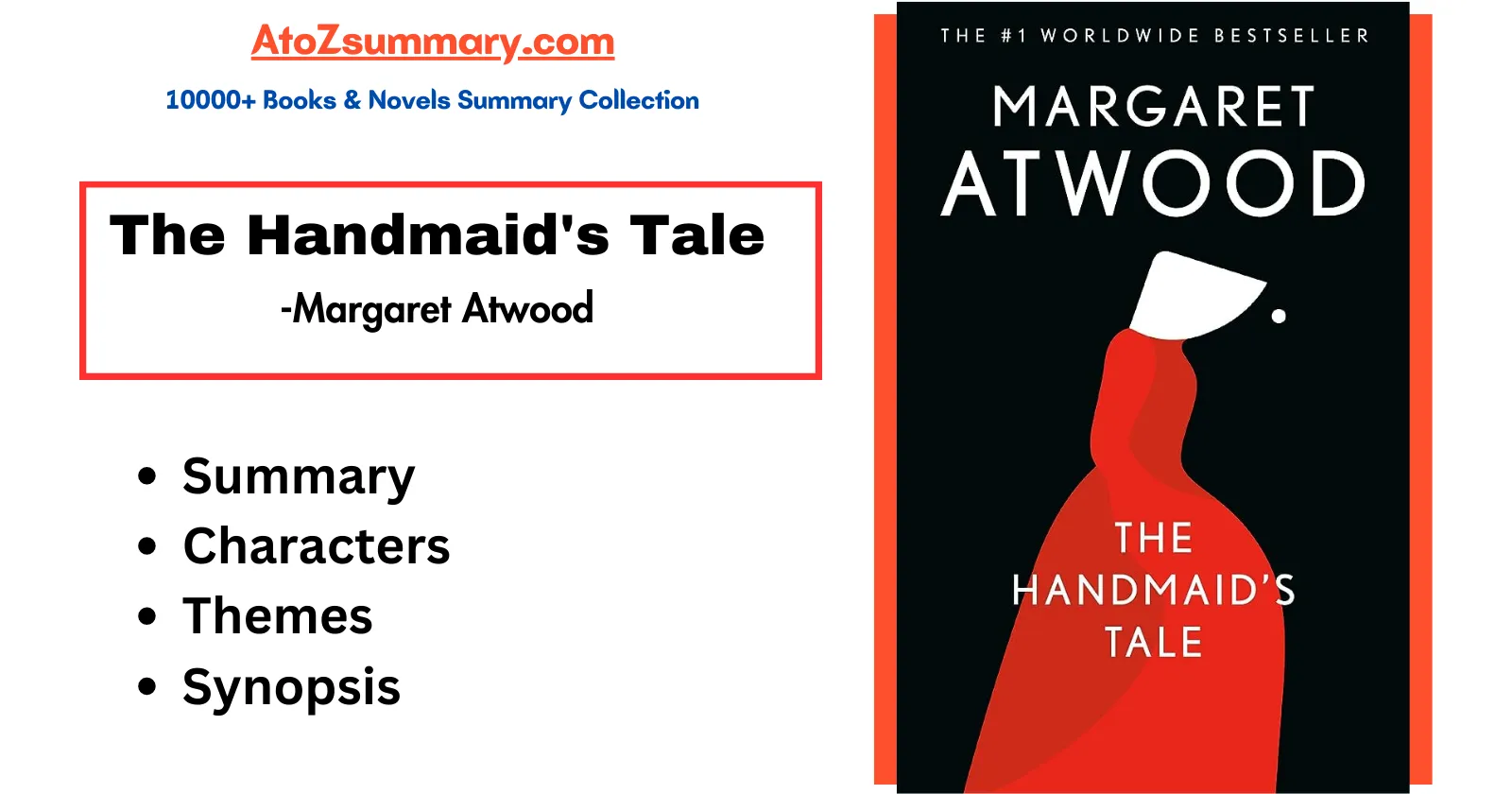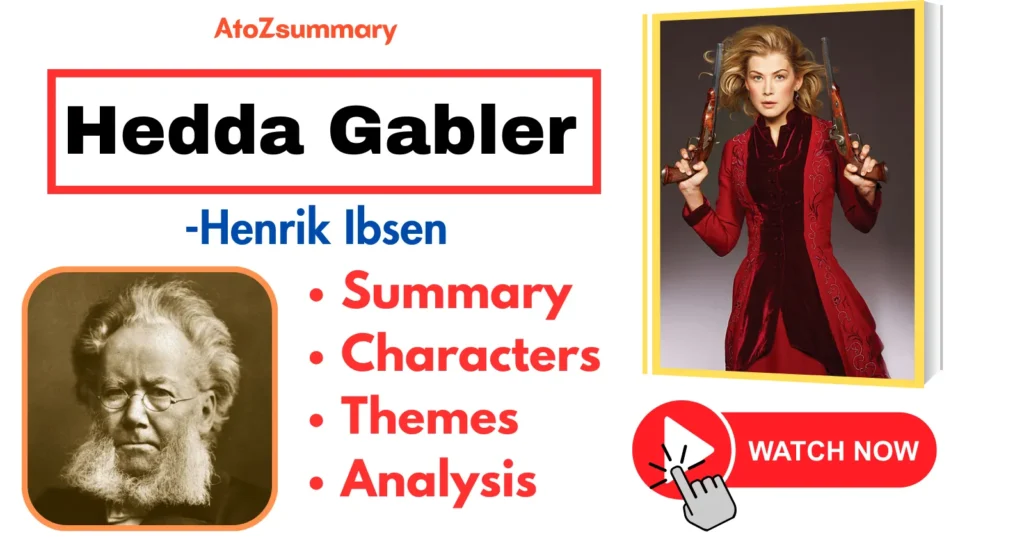| Title | The Handmaid’s Tale |
| Author | Margaret Atwood |
| Publication Year | 1985 |
| No. of Pages | 288 pages |
| Genre | Dystopian Fiction, Speculative Fiction |
| Setting | The Republic of Gilead (formerly the United States) |
| Protagonist | Offred (June Osborne) |
| Main Themes | Reproductive Rights, Gender Roles, Totalitarianis |
Characters
The main characters of “The Handmaid’s Tale” by Margaret Atwood are:
- Offred (June Osborne) – The main character, a woman who becomes a Handmaid, responsible for having babies for powerful people in Gilead.
- The Commander – A high-ranking man in Gilead who plays a role in Offred’s life.
- Serena Joy – The Commander’s wife, who is part of the ruling class but feels trapped by her position.
- Moira – Offred’s friend from before Gilead, known for her rebellious spirit.
- Aunt Lydia – A strict woman who helps train Handmaids and enforces Gilead’s rules.
- Nick – A driver who becomes close to Offred and is a bit mysterious.
- Luke – Offred’s husband from before Gilead, separated from her during the regime change.
- Janine – Another Handmaid with a tragic past, who struggles with the rules of Gilead.
- Rita – A Martha, responsible for household chores in the Commander’s home.
- Ofglen – Another Handmaid who becomes Offred’s friend, but their relationship is complicated.
Themes
The themes of “The Handmaid’s Tale” by Margaret Atwood are:
- Reproductive Control – The novel explores how those in power can control reproduction, affecting women’s autonomy over their bodies.
- Gender Roles – It looks at how strict societal roles based on gender can limit freedom and equality.
- Totalitarianism – The story shows the dangers of an extreme government with too much control over people’s lives.
- Loss of Identity – The characters’ names and identities are taken away, reflecting the loss of individuality under oppressive rule.
- Resistance – It highlights the importance of standing up against injustice, even when it seems impossible.
- Memory and Reality – The past is contrasted with the present, raising questions about how we remember and interpret history.
- Religious Extremism – The novel explores how religious beliefs can be twisted to justify cruelty and control.
- Isolation – Characters are isolated from each other, illustrating how a divided society can weaken collective strength.
- Freedom – The lack of freedom serves as a reminder of the importance of personal liberties.
- Language and Power – The manipulation of language demonstrates how language can shape and control society.
Synopsis
The Handmaid’s Tale is a novel about a woman named Offred who lives in a future where a strict government controls everything. Women have very few rights, and Offred is forced to become a “Handmaid,” whose job is to have babies for the powerful people.
The story follows her struggles and memories of her life before the government took over. Offred tries to find ways to resist and keep her identity in a world where she’s just a tool for reproduction.
Watch Full Novel Summary & Analysis on YouTube
Summary
The totalitarian, theocratic nation that has replaced the United States of America is the Republic of Gilead; Offred is a Handmaid. Handmaids bear children for affluent couples with problems conceiving due to dangerously low reproduction rates. Offred assists the Commander and his spouse Serena Joy, a former gospel singer & supporter of “traditional values.” Since the Handmaid’s names are made out of the term “of,” and the name of the Handmaid’s Commander, Offred, is not the narrator’s actual name.
Offred must have ritualized intercourse with the Commander every month when she is at the proper stage of her menstrual cycle, with Serena sitting behind her and holding her hands. Like that of all women, Offred’s freedom is constrained. Only for shopping excursions may she leave the house, and the Eyes, Gilead’s covert police agency, keep an eye on every public action she makes.
Offred constantly interjects flashbacks into her account of her day-to-day activities so that the reader may piece together the events leading up to the novel’s start. Before Gilead, Offred had an affair with married man Luke in the ancient world. Luke married Offred after divorcing his wife, and they had a kid. The mother of Offred was a feminist activist and a single mother.
Moira, Offred’s best friend, had a strong sense of independence. When pornography, prostitution, & violence against women were easily accessible, and fertility rates were falling due to pollution and chemical spills, the architects of Gilead first rose to prominence. They organized a coup and used the military to murder the president and members of Congress while pretending to be temporarily assuming control.
Women were not allowed to own property or have employment due to the crackdown on their rights. Offred and Luke attempted to cross the border into Canada with their daughter, but they were apprehended and split up; Offred hasn’t seen her husband or their child since.
Offred was taken prisoner and transferred to the Rachel & Leah Re-education Center, also known as the Red Center, where her marriage was declared null and invalid due to Luke’s divorce. Women were educated in Gilead’s philosophy in the center to become Handmaids. Aunt Lydia oversaw the ladies while defending Gilead’s ideals that women should depend on males and only care about having children. According to Aunt Lydia, a similar social structure eventually provides women with more protection and respect than the previous, pre-Gilead culture did. Offred does not know what happens to Moira once she escapes from the Red Center after being taken there.
Offred’s life falls into a constrained pattern after she is assigned to the Commander’s home. With another Handmaid named Ofglen, she goes shopping and visits the Wall outside of what was formerly Harvard University, where the bodies of rebels are hung. She must suffer the “Ceremony,” in which the Commander reads from the Bible to the family before going to the bedroom where Serena and Offred are waiting for him and having sex with Offred. She must also visit the doctor periodically to be tested for sickness and other issues.
The first deviation from her routine happens when she sees the doctor, who suggests that her Commander is probably infertile and offers to have intercourse with her to get her pregnant. She declines. She feels nervous with the doctor, but his suggestion is risky—if she is discovered, she may be expelled. After a ceremony, the Commander asks Offred to see him the next night in his study by sending Nick, his chauffeur, and gardener, on that mission. She starts going to see him frequently. He allows her to browse vintage publications like Vogue, and they play Scrabble, which is illegal because women aren’t permitted to read. He invites her to kiss him after their private conversations.
Offred learns from Ofglen that she is a part of “Mayday,” a clandestine group working to destroy Gilead, on one of their shopping excursions. However, Offred is starting to notice that the Ceremony feels distinct and less impersonal now that she is acquainted with the Commander. The Commander & his fellow leaders’ new order in Gilead is a topic in their late-night discussions. Offred confesses her misery, and the Commander says, “You can’t make an omelet without breaking eggs.”
Offred had been trying to become pregnant for a while, so Serena proposes that she have sex with Nick privately and pass the baby off as the Commanders. If Offred sleeps with Nick, Serena will bring her a photo of her daughter, and Offred is horrified to learn that Serena has always known where her daughter was. Offred is supposed to sleep with Nick that night, but the Commander sneakily brings her to a bar called Jezebel’s, where the Commander mixes with prostitutes.
Offred notices Moira there at work. When the two ladies cross paths in a restroom, Offred discovers that Moira was arrested shortly before crossing the border. She refused to go to the Colonies, where most political prisoners and those who threaten Gilead are transferred, preferring to live in Jezebel’s instead. Offred claims that Moira was never seen by her again after that evening at Jezebel’s. After a while, the Commander leads Offred upstairs, where they engage in sexual activity in what was formerly a hotel room. She attempts to project emotion.
Late at night, just after Offred leaves Jezebel’s, Serena shows up and instructs Offred to go to Nick’s room. Nick and Offred had sex. They soon start sharing beds, often without anybody noticing. Offred gets sucked into the relationship and refuses Ofglen’s efforts for her to interview the Commander for Mayday. All of the Handmaids participate in a collective execution of an alleged rapist one day under Aunt Lydia’s supervision. Ofglen delivers the opening punch. Later, she admits hitting the alleged rapist to put him out of his suffering and reveals to Offred that he was a Mayday member.
Soon after, Offred goes shopping and runs into a new Ofglen. Offred is informed by this new lady, who is not a member of Mayday, that the previous Ofglen hung herself when she noticed the secret police pursuing her. Offred is sent to her room at home by Serena when she learns about her visit to Jezebel’s and threatens to punish her. Offred observes a black vehicle approaching from the Eyes while she waits there. Nick then enters and informs her that she is being saved by the Eyes, who are Mayday members. Despite the Commander’s fruitless protests, Offred departs with them, heading either toward prison or freedom—she is unsure which.
The novel ends with an epilogue in the format of a lecture delivered by Professor Pieixoto from the year 2195 after Gilead fell. He uses objective, analytical language to discuss the origins and traditions of Gilead. He talks about the importance of Offred’s tale, discovered on recordings in Bangor, Maine. Nick, Pieixoto claims, orchestrated Offred’s escape, but it’s unclear what happened to her after that. She had the option of fleeing to Canada or England or being apprehended.
FAQs
What is The Handmaid’s Tale about?
The Handmaid’s Tale is a story set in a future where a strict government controls society. Women’s rights are limited, and a woman named Offred must become a “Handmaid” and have children for the ruling class.
What kind of story is it?
It’s a mix of a scary future story and a novel about how people treat each other. It’s often called a dystopian and speculative fiction.
Are there any adaptations of the novel?
Yes, “The Handmaid’s Tale” has been turned into a movie, a TV series, a play, and even an opera.
What are the big ideas in the story?
The story talks about women’s rights, power, and how societies can become very controlling. It also shows how people can resist and fight for their freedom.
Why is the novel important?
The novel has become an important part of discussions about women’s rights and how governments can become too powerful. It’s still talked about today because it has lessons for our own world.
About the Author-Margaret Atwood

| Detail | Information |
|---|---|
| Full Name | Margaret Eleanor Atwood |
| Date of Birth | November 18, 1939 |
| Nationality | Canadian |
| Occupation | Writer, Poet, Literary Critic |
| Genres | Fiction, Poetry, Dystopian Fiction |







!["The Yellow Wallpaper" by Charlotte Perkins Gilman- Summary, Analysis, Characters & Themes The Yellow Wallpaper Summary, Themes, Quotes & Characters [by Charlotte Perkins Gilman]](https://atozsummary.com/wp-content/uploads/2023/06/The-Yellow-Wallpaper-Summary-Themes-Quotes-Characters-by-Charlotte-Perkins-Gilman.webp)
![Little Women Summary,Themes,Characters & Synopsis [Louisa May Alcott] Little Women Summary,Themes,Characters & Synopsis [Louisa May Alcott]](https://atozsummary.com/wp-content/uploads/2023/08/Little-Women-SummaryThemesCharacters-Synopsis-Louisa-May-Alcott-1024x538.webp)
![A Game of Thrones Summary,Themes,Characters & Synopsis [George R.R. Martin] A Game of Thrones Summary,Themes,Characters & Synopsis [George R.R. Martin]](https://atozsummary.com/wp-content/uploads/2023/08/A-Game-of-Thrones-SummaryThemesCharacters-Synopsis-George-R.R.-Martin-1024x538.webp)

